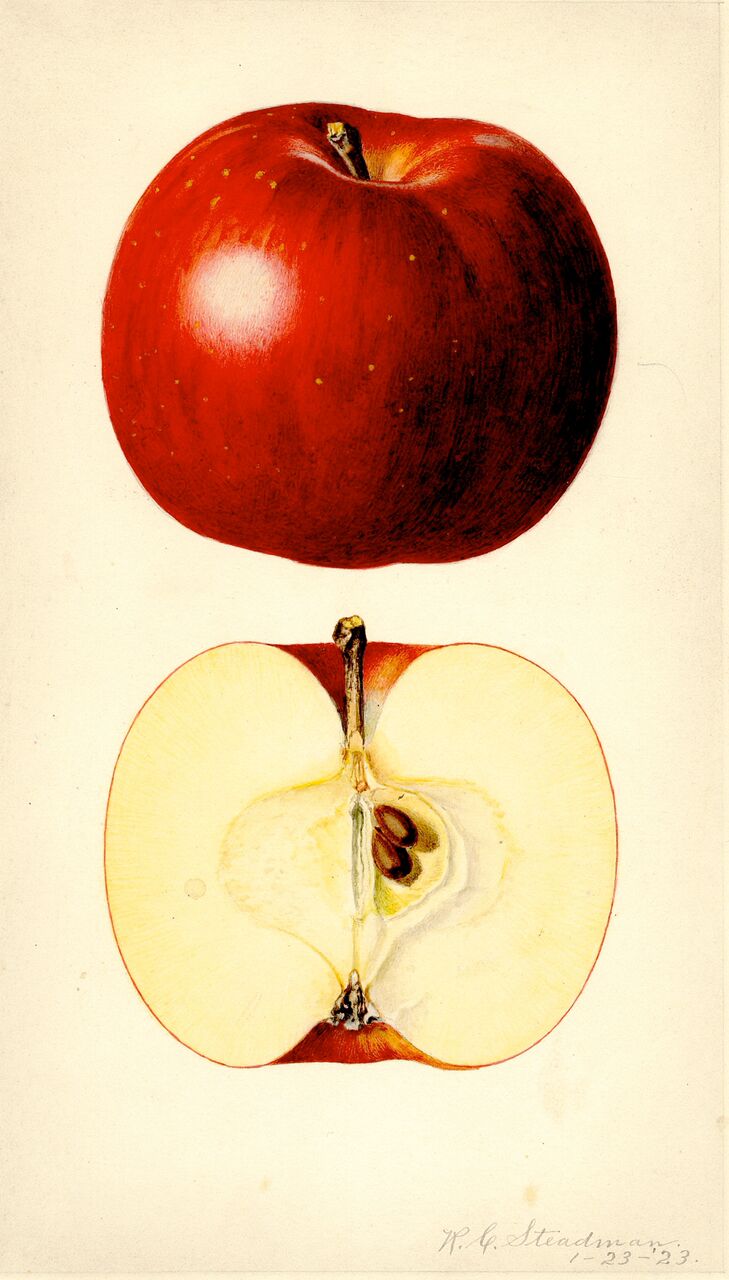
LOWRY
A maroon apple spangled with small white dots, this native of Piedmont Virginia came into cultivation on the eve of the Civil War. Its native local coincided with that part of central and western Virginia patrolled by Col. John S. Mosby’s raiders, and so an alternative name emerged for the fruit—Mosby’s Best. It peek of popularity occurred in the 1910s when publicity campaigns on its behalf inspired some enthusiasm for the variety. A 1916 broadside Lowry, or Pride of Virginia A Popular Red Apple printed effusive testimonials on its behalf. The Western Fruit Grower for instance enthused, “It is an all-around family apple, bakes well and cooks in other ways, with little waste and retains its flavor. For a person who cannot stand an acid apple and who does not like a sweet one, the Lowry fits the bills exactly.”
There were reasons it did not become a national seller. It was small. That wonderful tasting as a dessert apple when fresh from the tree, several strains developed including one that became somewhat mealy with age, though its taste did not diminish. “A semi-oblog apple with a long stem and shallow calyx cup, a yellow body, heavily striped with a deep red, which, when the apple is fully ripened, is the color of port wine and entirely covers the apple from stem to calyx; the skin is clear and very thing, covered with small salmon spots, and the flesh is white, crisp and juicy. It holds its shape and flavor and full lusciousness for eight months after it is picked and packed. The flavor is a sub-acid with a good aroma.”
The variety originated on the farm of John Lowry of Afton, Virginia. The variety is first mentioned in print in ads dating from 1847 announcing the sale of a farm in Henrico, Virginia.
Image: U.S. Department of Agriculture Pomological Watercolor Collection. Rare and Special Collections, National Agricultural Library, Beltsville, MD 20705, Royal Steadman, 1923.
David S. Shields